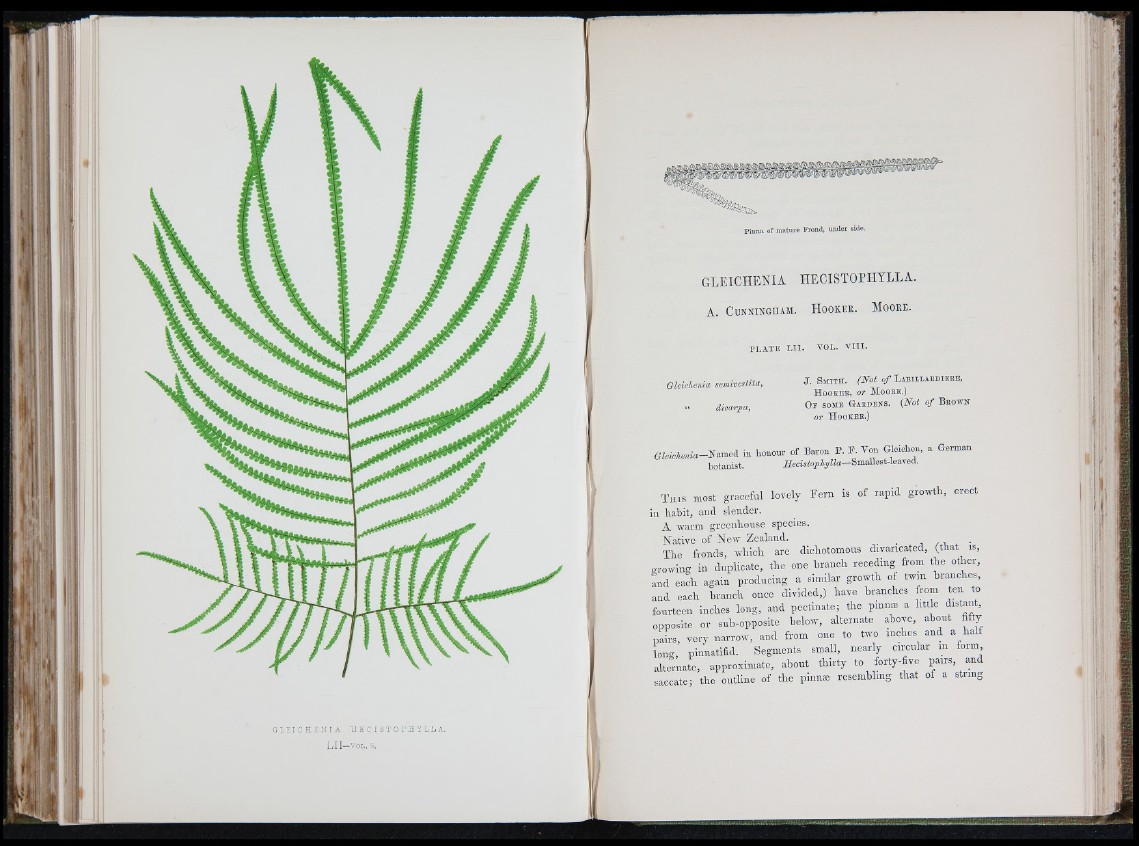
P inna of mature Frond, under side.
G L E IC H E N IA H E C I S T O P H Y L L A .
A . C u n n in g h a m . H o o k e r . M o o k e .
P L A T E L T I . V O L . V I I I .
Gleichenia semivestita,
“ dicarpa,
J . S m i t h . (N o t o f L a b i l l a e d i e r e ,
H o o k e e , or M o o e e . )
O f s o m e G a b d b n s . (N o t o f B e o w n
or H o o k e e . )
G le l c k e n ia -N a m o i in honour o f Baron P . B. Von Gleichen, a German
botanist. Smallest-leared.
T h i s m o s t g r a c e f u l lo v e ly P e m is o f r a p i d g r o w th , e r e c t
in h a b it, and slender.
A warm greenhouse species.
N a tiv e of N ew Zealand. _
T h e fronds, which are dichotomous divaricated, (th a t is,
c rowing in duplicate, th e one b ran ch rec ed in g from th e other,
L d e aX again p ro d u c in g a similar g rowth of twin branches,
and each b ran ch once d iv id ed ,) hav e branches from te n to
fourteen inches long, and p e c tin a te ; the pinme a little distant,
opposite or sub-opposite below, alte rn a te above, about fifty
p a irs, v ery n a rrow , and from one to two inches and a h a lf
lo n e pinnatifid. Segments small, n e a rly circular in form
a lten ia tc , approximate, about th irty to forty-five p airs, and
sa ccate; th e outline of th e piniifc resembling th a t of a s tu n g
I ![ • M
J; 1 '‘J
I ^
1"
i f
G L E I C H E N I A H E C I S T O P H Y L L A .
L I I—V o l. 8.